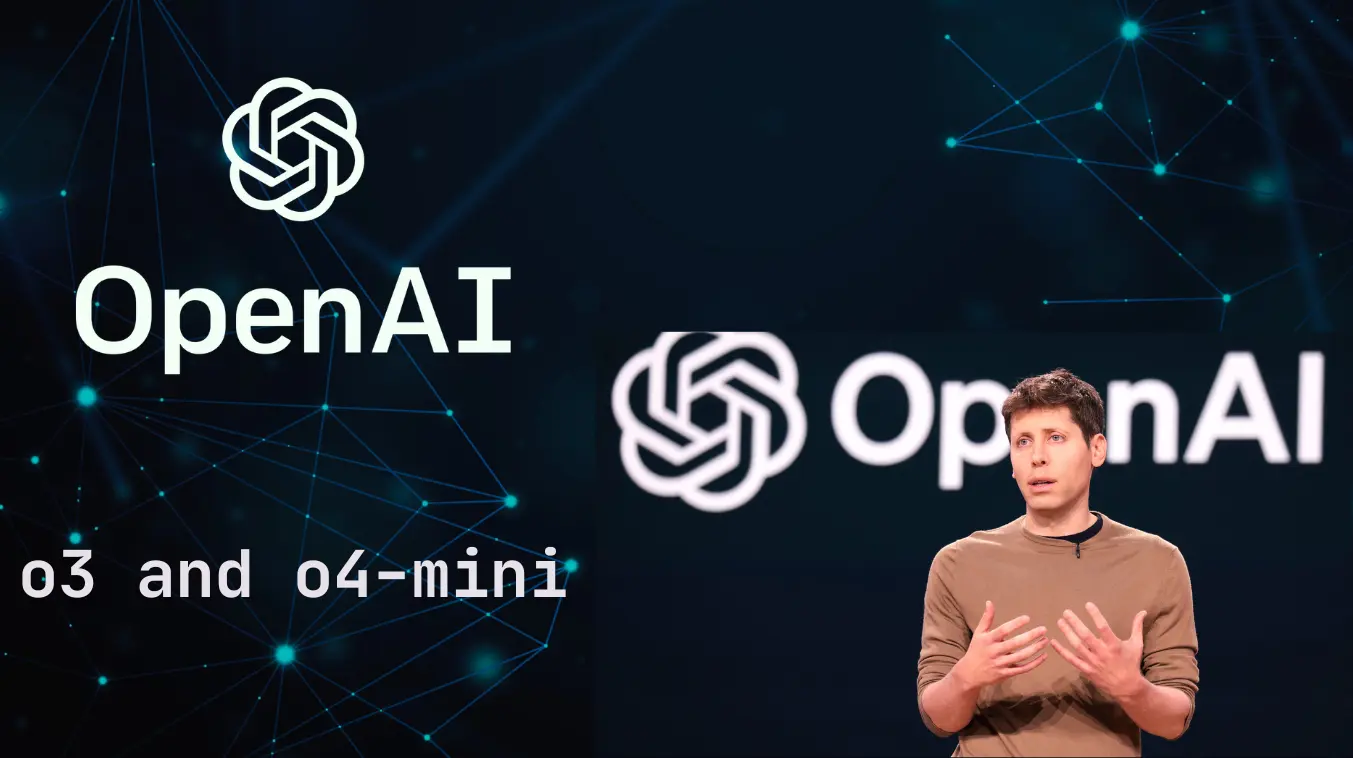
Openai releases o3 & o4-mini
3 min read
The New Kids on the Block: o3 & o4‑mini
O3: OpenAI’s Sophomore Reasoning Stunt
-
Release & Positioning: Launched April 16, 2025, o3 represents OpenAI’s most capable reasoning model yet, succeeding the o1 series and outperforming predecessors in coding, math, and science benchmarks __Wikipedia.
-
Capabilities: Built to deliberate longer on complex tasks, o3 topped the SWE‑Bench Verified leaderboard with a 69.1% score on agentic coding challenges and reached 87.7% on the GPQA Diamond science benchmark __OpenAI Community, __Wikipedia.
O4‑mini: When Size (and Cost) Matters
-
Optimized for Throughput: Debuting alongside o3, o4‑mini is tailored for speed and affordability, delivering “impressive results—especially in math, coding, and visual tasks—at lower cost” __Axios.
-
Free‑Tier Friendly: Available to all ChatGPT users (including free tiers) and via API, with a “high” variant reserved for paid subscribers offering faster responses and higher accuracy __Wikipedia.
Thinking with Images & Tools
-
Multimodal Reasoning: Both o3 and o4‑mini can ingest and manipulate images—cropping, rotating, zooming—as part of their internal chain of thought, expanding AI’s “neurons” into the visual domain __OpenAI, __The Verge.
-
Agentic Tool Use: These models aren’t shy about calling on external tools—web search, code execution, graph generation—chaining together actions to tackle data‑driven queries in under a minute __OpenAI.
Codex CLI: Frontier Reasoning in Your Shell
-
Local Coding Agent: Codex CLI is an open‑source, zero‑setup terminal tool that leverages o3, o4‑mini, and even GPT‑4.1, reading, modifying, and executing code while keeping your source local __OpenAI Help Center.
-
Approval Modes: Choose your level of control—from suggestive prompts to full auto—ensuring the AI doesn’t wildly rewrite your code without your say‑so __OpenAI Help Center.
Strengths: Why We’re (Almost) Excited
Benchmark Blitzkrieg
OpenAI’s new reasoning duo obliterates older models and rivals on coding and STEM exams, with o4‑mini achieving 99.5% pass@1 on AIME 2025 when paired with a Python interpreter __OpenAI.
Efficiency & Accessibility
O4‑mini’s cost‑performance frontier “strictly improves” over o3‑mini, meaning you can solve more problems per dollar without sacrificing too much brainpower __OpenAI.
Visual IQ Upgrade
By “thinking” with images, these models unlock tasks—like interpreting blurry schematics—that were previously stuck in Jurassic AI era limitations __OpenAI ,__The Verge.
Limitations: No Free Lunch
Hallucination Hotspots
Scaling up reasoning seems to amplify hallucinations: more claims overall mean more inaccurate ones, too. Even OpenAI admits “more research is needed” to tame this beast __TechCrunch.
Latency vs. Throughput Trade-offs
For ultra‑fast interactions, o3 can feel sluggish. Flex processing offers cheaper rates for non‑urgent tasks, but at the cost of longer waits and lower availability—finally, a valid excuse for blaming your AI model when deadlines loom __OpenAI Community.
Tool Overreliance
When your AI starts web‑browsing, coding, and charting, you must vigilantly review each step or risk letting it run wild—remember, machines aren’t humans (yet… probably) __OpenAI.
The Competition: A Motley Crew
Cursor: The AI‑Infused IDE
-
What it is: A fork of VS Code with built‑in AI features—autocomplete, codebase queries, smart rewrites—powered by Anysphere’s models __Wikipedia.
-
Pros: Seamless integration, strong autocomplete, “junior developer” vibes that boost productivity.
-
Cons: Lacks robust chain‑of‑thought and advanced tool‑calling; still needs human oversight for complex reasoning __Cursor - The AI Code Edit
Firebase AI Model: Google’s Agentic Sandbox
-
What it is: Firebase Studio, a cloud‑based, agentic dev environment powered by Google’s Gemini within the Firebase ecosystem __Google Cloud.
-
Pros: Streamlined full‑stack AI app prototyping, Google Workspace integrations, Genkit for multi‑language support.
-
Cons: Early preview; tied to Firebase’s cloud, meaning you’ll need to endure your daily dose of console UI updates __The Firebase Blog.
Claude 3.7 Sonnet: Anthropic’s Hybrid Thinker
-
What it is: A “hybrid reasoning” model that toggles between quick and extended thinking, complete with a visible scratchpad .
-
Pros: Agentic features like “Research” for multi‑step web queries with citations, Google Workspace plugins, impressive performance on finance and legal tasks __The Verge,__Lifewire.
-
Cons: Extended thinking can overthink—sometimes delivering contrarian musings that require users to rein in its intellectual wanderlust __Business Insider.
Verdict: Who Wins… Finally?
If you crave raw reasoning power plus image IQ, and don’t mind auditing hallucinations, o3 is your go‑to; if you need high throughput at a humble price, o4‑mini should be in your toolkit. Codex CLI offers terminal‑driven coding for the true command‑line purist. Cursor remains a delightful IDE companion, Firebase Studio is a promising all‑in‑one playground (once it matures), and Claude 3.7 Sonnet excels as a context‑rich research assistant—until it decides to philosophize about metaphors halfway through your bug fix. Headsup, they all suck in a different way.
More Articles
Key Words:
Agentic AIAi AgentsAgents vibe codingSoftware